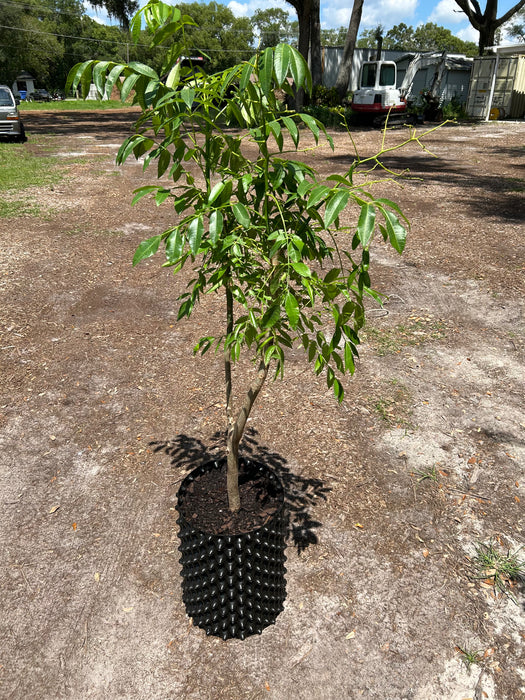
June Plum
June Plum (Spondias dulcis)
The June Plum, known by several other names, is a tropical fruit-bearing tree that is native to the Pacific Islands and parts of Southeast Asia. The fruit it yields is unique, often consumed in both ripe and unripe states, and the tree itself can be a striking addition to tropical and subtropical gardens.
Common Names:
Apart from the June Plum, it is also known as Golden Apple, Ambarella, Hog Plum, and Otaheite Apple in various parts of the world.
Best Growing Environment:
June Plum thrives in well-draining soil types, especially sandy loam or clayey loam. While it is adaptable to a range of pH levels, a slightly acidic to neutral pH (6.1 to 7.5) is optimal.
Average Height:
Under favorable conditions, the June Plum tree can achieve a height of 25 to 40 feet, though in many gardens, it's often pruned to remain between 15 to 20 feet for easier fruit harvest.
Growth Rate:
With a moderate to fast growth rate, the June Plum tree can establish itself quickly in the garden, often fruiting in its second or third year of growth.
Sun Requirements:
Preferring full sunlight, June Plum should be planted in locations where it receives at least 6-8 hours of direct sunlight daily. Though it can tolerate partial shade, fruit production is optimal in full sun.
Cold Hardiness:
The June Plum is suitable for USDA zones 10-11. It is sensitive to frost and prefers consistently warm climates. Young trees, in particular, need protection from cold spells.
Water Requirements:
While the June Plum tree is somewhat drought-tolerant when mature, regular watering is essential during its establishment phase. Water deeply and consistently, ensuring that the soil remains moist but not soggy.
Detailed Fertilizing Guide:
- Young Trees: For the first year, a balanced slow-release fertilizer, such as 10-10-10, applied every 2-3 months, can support root growth.
- Mature Trees: As the tree establishes itself, switch to a fruit tree-specific fertilizer or a formulation high in potassium and phosphorous. Apply it twice a year, once before the flowering season and once after harvest.
- Micronutrients: Occasionally, a micronutrient spray containing magnesium, zinc, and manganese can be beneficial.
Planting Guide:
- Site Selection: A location that receives ample sunlight and has protection from strong winds is ideal.
- Preparing the Hole: Dig a hole about twice as wide and of equal depth as the tree's root ball.
- Planting: Place the tree in the hole, ensuring the top of the root ball is level with the ground.
- Backfilling: Refill the hole, water generously, and add mulch around the base to retain moisture and control weeds.
USDA Zone:
The June Plum tree is best suited for USDA hardiness zones 9-11. Given its tropical nature, it thrives in regions with warm temperatures year-round.
June Plum trees, with their abundant, multifaceted fruits and attractive foliage, offer a dual benefit of beauty and bounty in the gardens they grace. The fruits themselves, tangy when green and sweeter upon ripening, can be a delightful treat straight off the tree or as part of various culinary concoctions.




